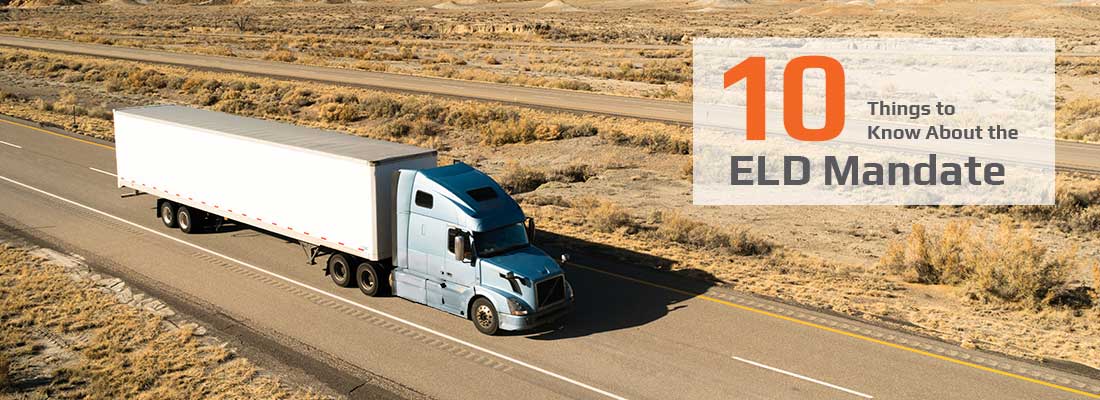The electronic logging device (ELD) rule will replace the current hours of service regulations starting December 18, 2017 (AOBRD – FMCSA 395.15). Transport companies that operate on American soil will be required to use recorders that comply to the new rule for managing hours of service.
2. Implementation in Two Phases
1st Phase: Starting 18 December 2017, all transport companies must have their vehicles equipped a device that complies with the ELD rule (FMCSA 395.20), or with the AOBRD rule (FMCSA 395.15) under the grandfather clause.
2nd Phase: Starting 16 December 2019, all transport companies must have their vehicles equipped an ELD certified device (FMCSA 395.20).
3. The Rule Applies to all Trucks Operating on American Soil
The rule on electronic logging devices applies to all heavy trucks operating on American soil. It therefore applies to Canadian trucks travelling to the U.S. Certain exemptions apply regarding short-haul transport, occasional drivers, and trucks manufactured before 2000.
4. Suppliers Self-certify Their Product
To be compliant, transport companies will be required to install devices listed on the FMCSA’s certified devices page. To have their device listed on this page, suppliers must first verify that it respects the regulations’ technical requirements, and then register it with the FMCSA.
5. Supporting Documents Must Accompany the Recorder Aboard the Truck
Installing an electronic logging device isn’t enough to be compliant. The following documents must also be aboard the truck at all times:
- A user guide for the driver describing how to use the electronic logging device.
- An instruction sheet describing data-transfer mechanisms supported by the device, and step-by-step instructions for producing and transferring the driver’s hours-of-service records to authorities.
- An instruction sheet for the driver, explaining the procedures for reporting a device malfunction and for keeping hours-of-service records during device malfunction.
- Blank driver logbooks to record the driver’s hours-of-service for a minimum of 8 days.
6. Starting 18 December 2017, All New Trucks Must be Equipped with an ELD
Trucks purchased after 18 December 2017 may be equipped with a AOBRD compliant device (FMCSA 395.15) only if it was purchased before 18 December 2017. Otherwise, you must equip new trucks with an ELD compliant device (FMCSA 395.20).
7. The ELD Must be Visible During Driving
If the driver is using a portable ELD (on a tablet or a smartphone, for example), it must be in a fixed position during driving so the driver can see the device from a normal sitting position.
8. The Logbook can be Edited
Both the driver and the fleet’s authorized personnel can edit the ELD’s hours-of-service records. Each edit must include an explanatory note, and the driver must authorize any change proposed by the fleet’s authorized personnel. The device must nevertheless keep the original version of the log.
9. Driving Status at 8 km/h
The ELD must automatically switch to the Driving status when the truck reaches 8 km/h (5 mph). The status will automatically switch to Stopped when the vehicle is completely immobilized for at least 3 consecutive seconds.
10. The ELD is an Investment, Not an Expense
A Transport Canada report on the subject concludes that the savings that come from using an ELD for managing hours of service outweigh the costs. Benefits include the time saved by drivers to manage their logbooks, the reduced cost of paper logbooks, the time saved by the fleet’s clerical personnel, the reduced hours-of-service infractions, and improved road safety.

